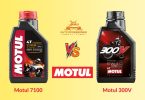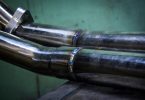Lithium grease has a petroleum base to it. It’s advised not to use it on rubber or plastic because it will break down that material and make it fail. Instead, it would help if you used it to adhere and lubricate metal to metal surfaces like garage door hinges and openers.
Silicone grease does better for low-stress/low-temperature treatment for rubber and plastic. Many use this grease on windows, sliding doors, waterproof flashlight seals, and plumbing applications. Unlike lithium grease, the silicone variety can be used on many different things.
Let’s break them both down to see which one will benefit your needs more.
Lithium Grease vs Silicone Grease
1. Best applications
Lithium
It’s used on metal-to-metal surfaces. It’s best not to use it on rubber, paint, and plastic because it will deteriorate those items. Use the lithium grease on hinges (car doors, trunks, and hoods), garage doors, c-clamps, vice screws, latches (car doors and trunk), folding lawn furniture (aluminum kind), motorcycle and bike chains, exercise equipment, bike pedals, plow springs, and more.
Silicone
This is a light lubricant that won’t damage your paint job but be careful because the grease creates a surface coat that you will not be able to paint over (once it has been applied). It’s best for car/house windows (tracks and runners), rubber seals for car doors, drawers with plastic wheels against metal tracks, and O-ring lubrication.
You can also use it with snow blowers/shovels (combats sticking snow), keys, locks, patio umbrellas (outdoors), and many more items around your home.
2. Formulations/Components
Lithium
The formulation is lithium soap combined with mineral or vegetable oil. It’s exceptionally gooey when applied to surfaces. Some special ones have additional components like molybdenum disulfide or PTFE.
Silicone
The composition is made by blending silicone oil and a thickener (usually amorphous fumed silica). It is also referred to as dielectric grease and comes out like a white glue/paste.
3. Variations of formula
Lithium
Some brands carry different types of lithium grease. They include multi-purpose, extreme pressure, and wire rope grease. They also come in colors like black, white, grey, blue, green, and red. The difference between them is what ingredients go into them (white has zinc oxide) and what they will be used for.
Silicone
It comes in two categories which are safe as well as food-grade safe. It also comes in either a grease or spray formula.
4. Non-Corrosiveness
Lithium
This grease helps parts move smoothly without seizing or dealing with friction. When applied, it can also protect and prevent rust and corrosion.
Silicone
Silicone grease of high quality usually has waterproofing in them, which helps prevent damage and rust. It displaces moisture that can cause corrosion.
5. Moisture/Water resistance
Lithium
This grease is very effective in resisting moisture as it’s waterproof.
Silicone
This grease is successful at repelling moisture because it’s also waterproof.
6. Load capacity
Lithium
The white grease usually handles a medium load capacity, but other varieties can handle heavier loads significantly well.
Silicone
This grease class prefers lower-stress applications but can operate under various load conditions.
7. Temperature resistance
Lithium
If we look at lithium grease, it’s very forgiving at high temperatures and under extreme pressure. The range for temperature resistance is minus 25 degrees Celsius to 130 degrees Celsius.
Silicone
This grease has an extensive range of temperature resistance. It can range from minus 60 degrees Celsius to 300 degrees Celsius.
FAQs
1. Why silicone lubricant grease is the best type for rubber O-rings and seals?
Ans. It won’t break down or deteriorate plastic or rubber parts like O-rings. That’s why it’s the best grease for those types of components.
2. What is lithium grease good for?
Ans. You can apply lithium grease to metal-to-metal surfaces or metal to plastic. It improves movability, reduces friction, and guards against rust.
3. Can white lithium grease be used instead of silicone grease?
Ans. This answer depends on the materials you will be applying the lithium grease to. You don’t want to use it on rubber or plastic parts. That job is for silicone grease. Lithium grease is the lubricant you need if you are using it for metal-to-metal or metal-to-plastic surfaces.
4. How long does silicone grease last?
Ans. Once opened, silicone grease has a shelf life of 12 months. If it remains unopened in its original seal, it can last up to 5 years. Applying it to different fixtures might last several years (depending on the item being used).
5. How do you remove silicone grease?
Ans. On occasion, you might need to remove silicone grease. If that’s the case, use degreasing dishwashing soap and hot water. You can either fill up a sink or bowl with hot water. Wear gloves when doing this task so you won’t burn yourself. You can scrub the grease off using an old cloth or sponge.
6. Where can I purchase lithium or silicone grease?
Ans. The great news is both products are available in a variety of locations. You can order online or in many hardware and department stores.
7. What are the similarities between lithium and silicone grease?
Ans. They are used for lubricating things in different areas (as discussed). They both don’t conduct electricity or dissolve with water contact and do well in high temperatures.









Leave a Comment